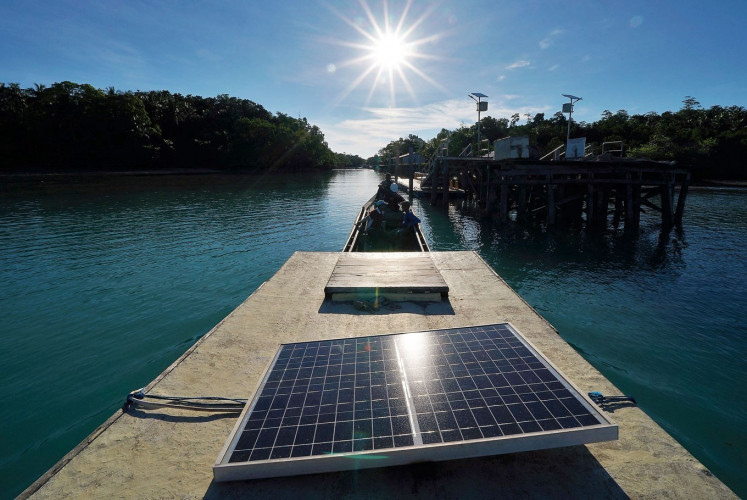Popular Reads
Top Results
Can't find what you're looking for?
View all search resultsPopular Reads
Top Results
Can't find what you're looking for?
View all search resultsWWF maps out Asmat customary areas
World Wildlife Fund (WWF) Indonesia is currently collecting data and mapping out significant areas for the Asmat people in Papua
Change text size
Gift Premium Articles
to Anyone
W
orld Wildlife Fund (WWF) Indonesia is currently collecting data and mapping out significant areas for the Asmat people in Papua. The results will be submitted as part of material used for the drafting of Asmat regency's spatial planning bylaw.
The important areas that have been identified so far are hunting locations,a sago (Papuan staple food item) village, access to clean water, ancestral resting places, ancestral sites and other locations that are considered sacred, which only allow for restricted access.
'The Asmat people still live traditionally in a way in which everything is connected to their ancestors. Therefore, they divide their living areas into sacred and non-sacred spaces. If we do nothing to preserve their way of life, then likely someday this unique culture will vanish,' WWF Sahul Papua project leader W Umbora said.
He said indigenous Asmat people had been involved in the project right from the start.
Asmat regency comprises eight districts and 175 villages with an area of 23,764 square kilometers. It is a low-lying land area with an elevation of only 0.100 meters above sea level.
The WWF previously mapped out customary land in 2006 with the help of local people in the Lorentz National Park. The Asmat regency administration officially recognized the mapped customary areas in 2008.
'We Asmat people cannot be separated from our ancestral life. That is why we really need to protect our sacred areas. This mapping project will help us to remain with our ancestors, which is something we don't want to lose,' said Bernadus Aso, a prominent Asmat figure in Sawa village, Sawa Erma district. (hrl/dic)










